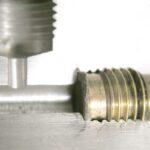When faced with the challenges of incontinence, it is crucial to choose the right products that provide comfort, security, and dignity. This comprehensive guide aims to assist individuals and caregivers in making informed decisions regarding incontinence products. From absorbency levels to size and fit, we will explore various factors to consider when selecting the most suitable incontinence products for your needs.
Understanding Incontinence
Before diving into the specifics of choosing incontinence products, it is essential to have a basic understanding of incontinence itself. Incontinence refers to the involuntary loss of urine or feces, and it can affect people of all ages. It is a common condition that can have a significant impact on an individual’s quality of life. There are different types of incontinence, including stress incontinence, urge incontinence, overflow incontinence, and functional incontinence. Each type may require different product features and absorbency levels.
Factors to Consider
1. Absorbency Levels
One of the key considerations when choosing incontinence products is the absorbency level. Absorbency refers to the product’s ability to hold urine or feces without leakage. It is important to match the absorbency level with the individual’s specific needs. Light absorbency is suitable for occasional leaks or dribbles, while moderate to heavy absorbency is required for more substantial amounts of urine or fecal matter. It is advisable to consult with a healthcare professional to determine the appropriate absorbency level.
2. Size and Fit
Incontinence products come in various sizes to accommodate different body types. Achieving the right fit is crucial for comfort and effectiveness. Ill-fitting products may result in leakage or discomfort. It is recommended to refer to the product’s size chart and take accurate measurements before making a purchase. Some products offer adjustable features, such as elastic waistbands or adhesive tabs, to provide a more customized fit.
3. Material and Breathability
The material of the incontinence product plays a significant role in comfort and skin health. Look for products that are made from breathable materials to promote air circulation and reduce the risk of skin irritation or rashes. Common materials include cotton, polyester, and plastic. Consider personal preferences and any specific skin sensitivities when choosing the most suitable material.
4. Ease of Use
For both individuals and caregivers, the ease of use is an important factor to consider. Incontinence products should be user-friendly and convenient to ensure a hassle-free experience. Features like tear-away sides, resealable tapes, and disposal options make the products more convenient to manage. Additionally, products with clear usage instructions and packaging that facilitates easy storage and transportation are worth considering.
5. Odor Control
Managing odor is a significant concern for individuals dealing with incontinence. Look for products that have odor control properties, such as odor-neutralizing technology or added fragrances. These features can help maintain a fresh and comfortable environment, enhancing the individual’s confidence and overall well-being.
Conclusion
Choosing the right incontinence products is essential for managing incontinence effectively and maintaining a high quality of life. Consider factors such as absorbency levels, size and fit, material and breathability, ease of use, and odor control when making your selection. By taking into account individual needs and preferences, one can find the most suitable products that provide comfort, security, and dignity. Remember to consult with healthcare professionals for personalized advice and guidance throughout the process.
 Mastering Online Masterclasses: Choosing the Right Online Violin Instructors
Mastering Online Masterclasses: Choosing the Right Online Violin Instructors  Empowering Healthcare Professionals: How WT Farley Oxygen Regulators Enhance Patient Care
Empowering Healthcare Professionals: How WT Farley Oxygen Regulators Enhance Patient Care  Elevate Your Collection: Unveiling the Beauty of Custom Wine Cellars in Ottawa
Elevate Your Collection: Unveiling the Beauty of Custom Wine Cellars in Ottawa  Enhancing Your Online Presence with Real Estate SEO Services
Enhancing Your Online Presence with Real Estate SEO Services  The Epitome of Luxury: Elevating Spaces with Imperial High-End Kitchen Cabinets
The Epitome of Luxury: Elevating Spaces with Imperial High-End Kitchen Cabinets  Pokémon go accounts- Exploring the reasons behind player demand
Pokémon go accounts- Exploring the reasons behind player demand  Pokemon go shortcut to greatness – Buy now
Pokemon go shortcut to greatness – Buy now  Online slot games for classic fruit machine lovers
Online slot games for classic fruit machine lovers  Ensuring Security In Online Fund Transfers: Understanding Fraud Prevention And Risk Mitigation
Ensuring Security In Online Fund Transfers: Understanding Fraud Prevention And Risk Mitigation 




